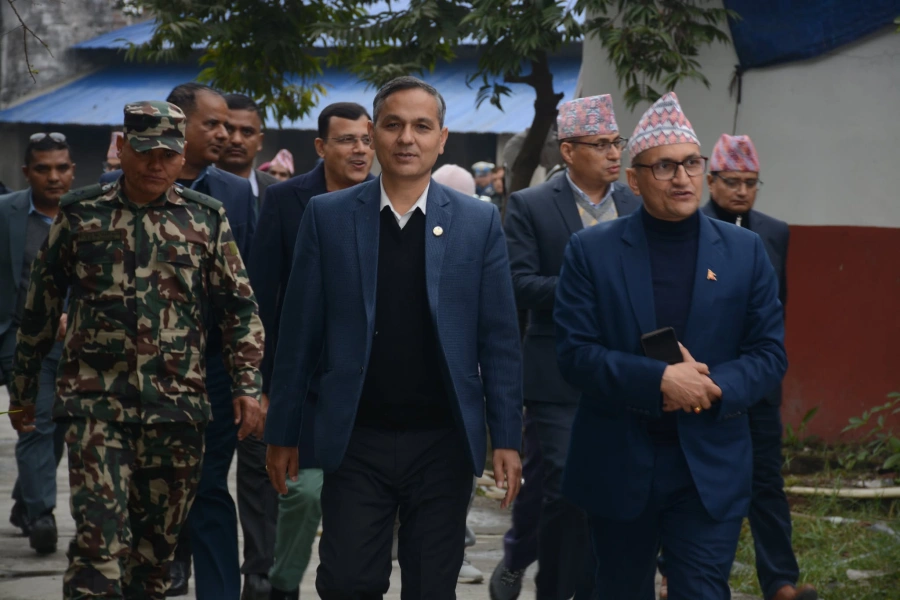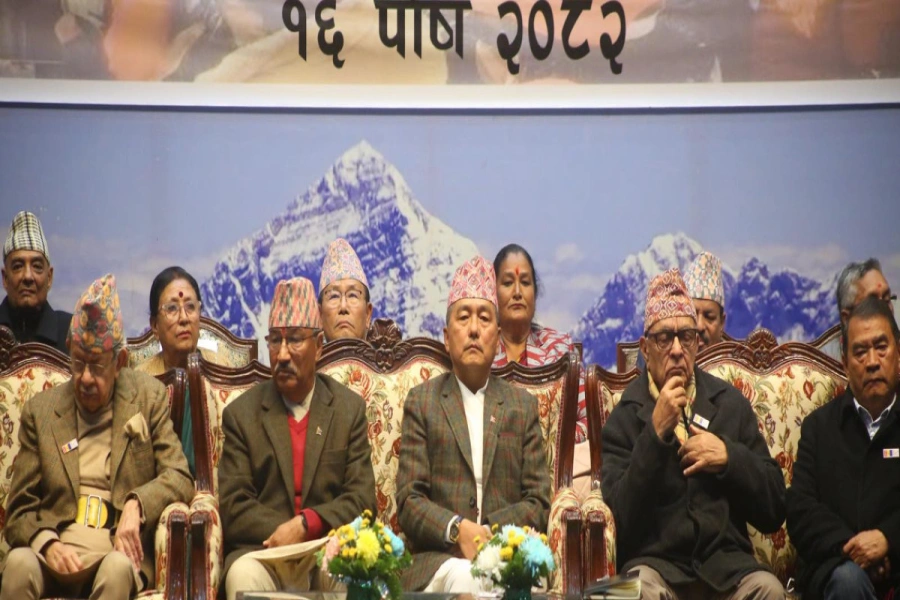During the past two decades, almost all countries in the world faced serious problems of mass youth unemployment and underemployment, with unemployment rates being much higher in rural than in urban areas. Youth, defined in Nepal’s National Youth Policy as those aged 16-40, make up 39 percent of total population, and 38.8 percent of them are either unemployed or underemployed.
These young people are not necessarily idle, but report themselves as “unemployed” because they are waiting for what they consider “appropriate” jobs while they are engaged in odd jobs. This not only shows how badly human potential is wasted, but also highlights the irrationality in the economic and political structures that we live in. Globally, organizations like ILO, UN Millennium Development Goal, etc. have raised the issue of youth unemployment, but neither these institutions, nor other development agencies and national governments have any idea how to generate decent and productive work for youth on the required scale.
Have you thought about how important agriculture is to our own community? Agriculture is what powers our economy. The CIA World Factbook 2013 indicates that agriculture employs 75 percent of our 26.6 million strong population, contributing 38.1 percent to the GDP. It is the developing world’s biggest employer and the agrifood sector will certainly grow in the foreseeable future–it has to, to fulfill the world’s growing demand for food, feed, fuel and fibers. If given appropriate support, it has the potential to provide decent livelihoods for many more.
But agriculture in its present state is so unattractive to young people that they are turning away from it and so-called rural futures. Many researchers will agree that young people’s turning away from agriculture is a fact, but we should not take it for granted until we understand the reasons behind it. And that becomes harder as our national culture grows away from farms and more and more of us, including elected representatives, grow up inside city limits. The poor participation of young people in farming and agricultural economy must be seen as a matter of grave concern by all; indeed it directly threatens the future of agriculture and rural economic transformation. Who will feed Nepal’s population, projected to reach 47.8 million by 2050?
The major problems that inhibit youth participation in agricultural activities are lack of commitment, lack of logistic support, and lack of land ownership. Moreover, their alienation from agricultural knowledge and rural life skills is made worse by misguided politics. Nepali Congress Leader, Ram Chandra Paudel, in his recent publication Agricultural Revolution and Socialism, stated that people who work in farms are reluctant to say they are farmers. He observed that some legislators and leaders harbor misconceptions about farming and agriculture-related industries: “I don’t think they’re anti-agriculture. They just don’t understand it.”
Agriculture can be sustainable if it attracts future generations of farmers. Learning, field experience and dissemination of information will be effective through youth empowerment, which could launch awareness programs of agriculture as an attractive business. Young people must be involved and considered in all government strategies and policies.
There are lots of success stories of youth in agriculture. Heartbeat, a group of young Nepali organic farmers led by Juju Kaji Maharjan, have said that their main aim is “to attract Nepali youths suffering from brain-drain and continually moving to other countries for opportunities, towards farming.” Khojraj Katuwal, after gaining six years of tomato farming experience in Israel, started an agriculture farm in Jitpurfedi in Kathmandu valley with the collective efforts of 12 youths. This farm was established not just for commercial purposes, but also as a research center.
Nepal had initiated three-year youth policy development processes in 2008, but Vice-Chairman Punya Prasad Regmi believes that “Youth Self-Employment Program” will not be successful until a stable government approves its regulatory framework. Even then, a few youths have benefited from this program. Similarly, Nepal Agribusiness Promotion Policy (2006) has focused on infrastructure development for processing and marketing as a foundation for commercialization and diversification, but it has also been criticized for lack of sufficient motivation to farmers, inadequate technical and material support, lack of other relevant policies, and weak governance.
What can change—for better or worse—are the attitudes that lawmakers bring with them as they consider legislations and policies that can impact agriculture. The farming industry needs to make sure it’s being heard and understood. Farming communities need help; and their elected representatives need to give major assistance through proactive, and not reactive, messages. In the changing model, we need to consider how agribusiness functions in specific contexts.
First, if the government aims to solve youth unemployment, then the focus should be on policies that encourage youth to become productive in rural areas, to be innovative and create opportunities for self-employment. With rural electrification and other infrastructure-development programs in place, a multi-sectoral approach that promotes improved agricultural production, value addition, and agribusiness value chains needs to be adopted to achieve forward and backward economic linkages between rural and urban sector.
Secondly, when it comes to lending policies, financial institutions have always sidelined small farmers. Youth could venture into a range of viable business opportunities in the sector such as agro-processing, rice hulling and packaging, bee keeping and honey processing, fish farming and processing, piggery, goat rearing and poultry farming. This will create opportunities for farmers and agribusiness entrepreneurs along agricultural value chains to transform commodities into higher value products—a process that can play an important role in youth employment.
Finally, we need to replicate successful development models. We need to adopt various free market reforms, prioritize youth entrepreneurship and mindset-change. By encouraging the investment of remittance incomes in high value agriculture, we can not only boost the productivity and living standards of rural farmers, but also engage rural youth in agriculture. Agricultural enterprise advisory services, enterprise schemes, enterprise management and skills trainings could be instrumental to attracting rural youths (including returnee migrants) into agriculture. Unless we embrace youth entrepreneurship in agribusiness and practical innovative technologies to produce value added products for local and international markets, our vision of a first class economy will remain a dream.
In conclusion, thinking about youth, farming and food together raises fundamental questions about the future of rural youth, and of agriculture itself. As leaders in agricultural development, policymakers and professionals must articulate new visions for agriculture that can attract young people and align with their aspirations and interests. If the vision of a future based on agribusiness is to be realized, and if young people are going to have a safe place in that future, these problems have to be taken seriously and given much more attention than in recent policy debates and researches.
The author is Nepal representative of Young Professionals’ Platform for Agricultural Research for Development
ypardnepal@gmail.com
Eating junk food is bad for health!




































